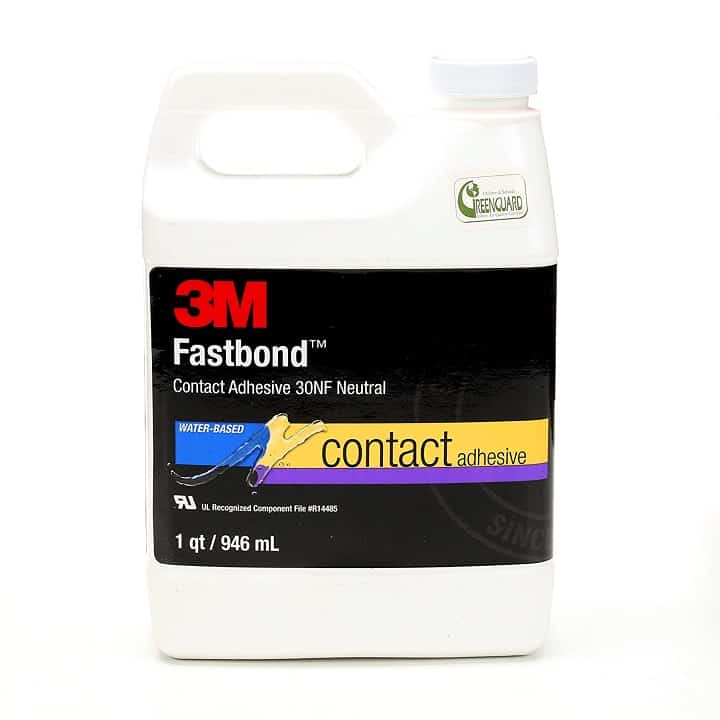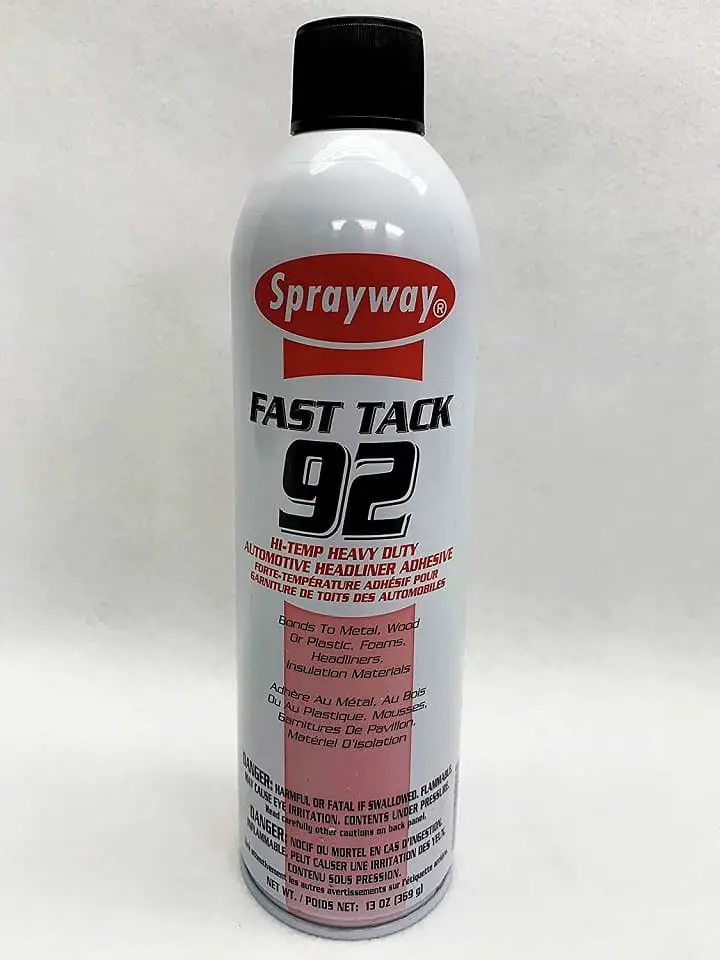How to glue vinyl to foam? To get the job done, you’ll need to do two things: choose the right adhesives and do it the right way. The good news is that this post will help you do both. So let’s scroll down for more information.
Things You Will Need

To complete this project, you will need the help of a suitable adhesive. Foam and vinyl require versatile glue that can withstand movement over time.
For example, if you want to fix a vinyl covering over a seat’s foam, your chosen adhesive must maintain the bond through months or even years of standing, sitting, and moving around in this seat.
The best options for this project are:
- Contact adhesive
- Spray adhesive
- Specially designed ones like EVO-STIK.
Here are our detailed explanations and recommendations for each.
EVO-STIK Adhesive

Many projects involving foam and vinyl are subjected to outdoor weather. In this case, they must handle wet, humid, or damp conditions.
Our recommendation is the EVO-STIK adhesive. It cures quite quickly, is waterproof, and bonds equally to non-porous and porous materials.
The manufacturer’s homepage describes this adhesive as “solvent-free” and “unaffected by movement and extreme temperatures.” So there is no denying that it is ideal for repairing or building glue in almost any item.
Our recommendation: EVO-STIK Impact Adhesive.
Contact Adhesive

It is okay to use contact adhesive to fix foam to vinyl. The greatest benefit of this adhesive is extreme flexibility. This option can work well with various materials, and its flexible bond makes it challenging to form weaknesses over time.
Contact adhesive is ideal for foam and vinyl, which have the potential to bend and flex under plenty of conditions. Furthermore, you can use flexible contact adhesives for any projects subjected to frequent stressors.
Our recommendation: 3M Fastbond Contact Adhesive
Spray Adhesive

The spray adhesive is extremely helpful for repairing or building furniture.
One of its best features is extremely fast drying as the glue should become tacky quite fast, then you can position any piece and secure them.
The bond this adhesive creates will also be waterproof and weather resistant, making it an excellent choice for any DIY project.
Our recommendation: Upholstery HIGH Temperature/Strength Web Glue.
A Comprehensive Guide On How to Glue Vinyl to Foam
Once you have the right adhesive, it is time to do the job. Here are three simple steps to glue vinyl to foam.
Step 1: Prepare Foam And Vinyl Before Gluing
Let’s start by cleaning the surfaces which you will glue together. Many people skip this step because they think it is not essential. Don’t make the same mistake as them. You need to remove debris as much as possible using a soft dry brush.
Remember that foam will react to temperature and humidity changes. So it is essential to keep the foam dry and at room temperature when preparing the surfaces and applying the glue.
There are imperfections on the vinyl’s surface underneath in most cases. Hence, before you start, ensure the foam surface has no noticeable bumps and dips.
You can smooth it with high-quality sanding paper. Then, you can use filler to eliminate any gaps or holes.
After sanding, thoroughly clean the surface to remove all debris that may interfere with the adhesive bond.
Step 2: Apply Glue for Foam And Vinyl
Once the surfaces have been thoroughly cleaned, it is time to apply glue. All you need to do is apply an even glue layer on the surface of the vinyl and foam.
Do not make it too thick, as this may prolong the curing period but do not add additional strength. After that, let the adhesive get slightly tacky before placing both pieces thoughtfully in place.
Step 3: Give Them Time to Cure
No matter what type of vinyl or foam you are working with, your chosen adhesive requires a dry and controlled environment to cure evenly and quickly.
If you are doing this project outdoors, you will need to cover them or move them indoors temporarily.
You can also use clamps if you want to keep the vinyl piece flush around curves or help it fight against gravity.
Secure all of its edges to ensure the vinyl is taut and flush against the foam.
Minimize air bubbles by smoothing the vinyl over the foam a few times and applying slight pressure.
FAQs
Can Gorilla Glue work Well on vinyl flooring?
According to the manufacturer, Gorilla Glue is not ideal to use on vinyl floors.
The fact is that Gorilla Glue is water activated. Its polyurethane formula will work best on gluing metal, foam, glass, ceramic, wood, and stone. That is why it will not work so well on vinyl flooring.
Does Super Glue work on metal over rubber?
Yes, the super glue can stick to rubber. But remember that it is not hard.
The rubber features a high elongation, while the super glue can’t move. Typically, you should pick a proper adhesive to move or stretch the base material.
What Glue Should I Use to Fix Vinyl to Metal?
GOOP adhesive can offer an excellent bond between metal and rubber
GOOP adhesive is ideal for automotive restoration and repair as it delivers an excellent bond between metal and rubber, plastic, vinyl, or glass.
The Bottom Line
You have reached the bottom of this article. The most important part of this project is choosing the suitable adhesive. Then you need to clean the surfaces correctly, apply the adhesive and give them time to cure.
Overall, it’s a simple project, and anyone can get the job done quickly. Please share this article if it is helpful to you. Thank you for reading!
